It’s a Boy!
Opening Prayer
Thank you, Father, for the gift of your Son. Thank you for sending heaven to earth to bring earth back to heaven. Thank you for loving us enough to save us and for emptying yourself and entering into time and space through the Incarnation. Help us, by your grace, to prepare the mangers of our hearts to receive you fully this season. Amen.
(Mass during the Day)
First Reading: Isaiah 52:7–10
Responsorial Psalm:
Psalm 98:1, 2–3, 3–4, 5–6
Second Reading: Hebrews 1:1–6
Gospel: John 1:1–18
Challenge for the Week
Imagine how Mary and Joseph must have beheld Jesus’s glory radiating from the manger. Picture them gazing upon him for hours, completely present to God’s divine presence. This week, enter more deeply into the Christmas mystery by beholding the glory of those around you more purposefully. Put away the cell phone. Avoid screens as much as possible and really be present to those the Lord places before you. This Christmas, give people the gift of yourself and your undivided attention.
Journal
1. Who has been a John the Baptist type in your life, pointing you to Jesus? Take a moment and offer a prayer of thanksgiving for that person.
2. What is one thing you can do today or this week to help othersbetter realize or appreciate the true meaning of Christmas?
3. Meditate on a creche or nativity set for at least twenty minutes. Write out and journal words, sentences, or insights that the Holy Spirit illuminates within you while you gaze upon it.
Beyond Words
Most Christians know the Christmas story—and most know it a little too well. The mystery of the Incarnation and what transpired two thousand years ago can become almost white noise by the time we have heard our six thousandth Christmas song between Labor Day and Christmas Eve. This is where the readings are of central importance. The excerpt from St. John’s gospel invites us to lean in and see not only the beautiful depth of this passage but also how it correlates to the other three readings of the day.
Isaiah and the psalmist proclaim the “good news” that God is King, telling us to “sing a new song” and that God’s “victory has been made known.” Hebrews goes on to speak of God’s fidelity and fulfillment of all the promises he uttered through the prophets. We hear of God’s goodness and the glory seen in and through the Son, the one whom even the angels worship! Through these readings, God’s people had waited—and longed for—the promised Messiah, and now, finally, he has arrived.
In the gospel we hear again about the beautiful mystery of the Incarnation when God took flesh “and made his dwelling among us.” It’s easy to lose sight of the glory of Christmas and all God did amid the noise and celebrations that rightly accompany this day and season. In taking the time to look back, though, to how God’s plans unfolded in the person of Christ, we are reminded that we have a God who was and is constantly working for our salvation, even when we are not. What a wonderful and glorious gift Jesus is and will always be; in every culture and language, we unite today to celebrate and rejoice, for God became human to lead humanity back to God.
Related Fact
The prologue to the gospel of John might sound familiar at first hearing. Perhaps you’ve heard it proclaimed before or have read it yourself, or maybe you’re familiar with that introductory phrase “in the beginning,” which we also hear at the beginning of Genesis (which is Hebrew for “beginning,” not coincidentally). St. John is intentionally mirroring the language and poetic style of the Yahwist writers of Genesis here, reminding us that Jesus is the “new Adam” coming to redeem God’s fallen children.
Behind the Scenes
This week’s gospel passage comes from the beautifully written prologue to St. John’s gospel account. John emphasized the fact that Jesus was not just another guy. Christ was both God and man. God became man so that human beings could live with him in heaven. God created the world in Genesis, and now Jesus is working a new “spiritual creation” in the lives of his followers. John’s entire gospel is highly symbolic, rooted in the old covenant all the while pointing toward the new. Only when we comprehend the dual nature of Christ (human and divine) can we understand the purpose of his mission and the glory of the Church he instituted on earth.
Several of these themes are on prominent display in the gospel we hear today. The allusion to the Genesis creation story, the juxtaposition and battle between light and darkness, the role of the forerunner John the Baptist heralding Christ’s greatness rather than his own, the rejection of the world, our spiritual rebirth, and the mystery of the Incarnation are all deep theological themes highlighted in these opening eighteen verses.
John’s gospel is a constant invitation to advance from simple reading and plunge into the sacramental waters. For John, everything points us back to the Church and the sacraments. John weaves together the symbolic and historical into an unprecedented and gorgeous tapestry of faith.
Word Play
We hear in the gospel that St. John the Baptist comes to give “testimony” and to “testify.” From the Latin testimonium, the word literally means “to bear or offer witness.” Just as witnesses in a courtroom are called to share what they observed personally, when we offer our spiritual testimony, we are sharing what we have witnessed about the glory and fidelity of God.
This excerpt from One Sunday at a Time: Preparing Your Heart for Weekly Mass (Cycle B) is reprinted with permission of Ave Maria Press.







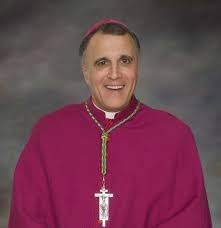
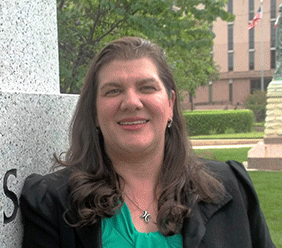

 Kimberly Kay Cox
Kimberly Kay Cox







 Mark Mogilka
Mark Mogilka





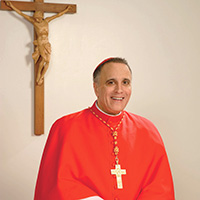








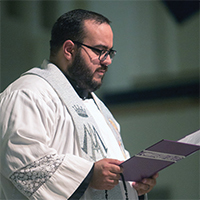





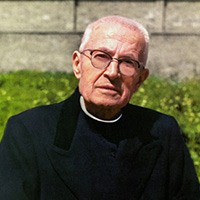




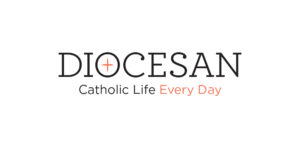


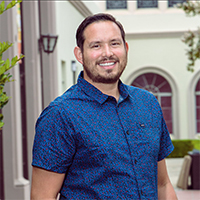
 Armando Cervantes
Armando Cervantes Anna Betancourt
Anna Betancourt
 Andrea Chavez-Kopp
Andrea Chavez-Kopp